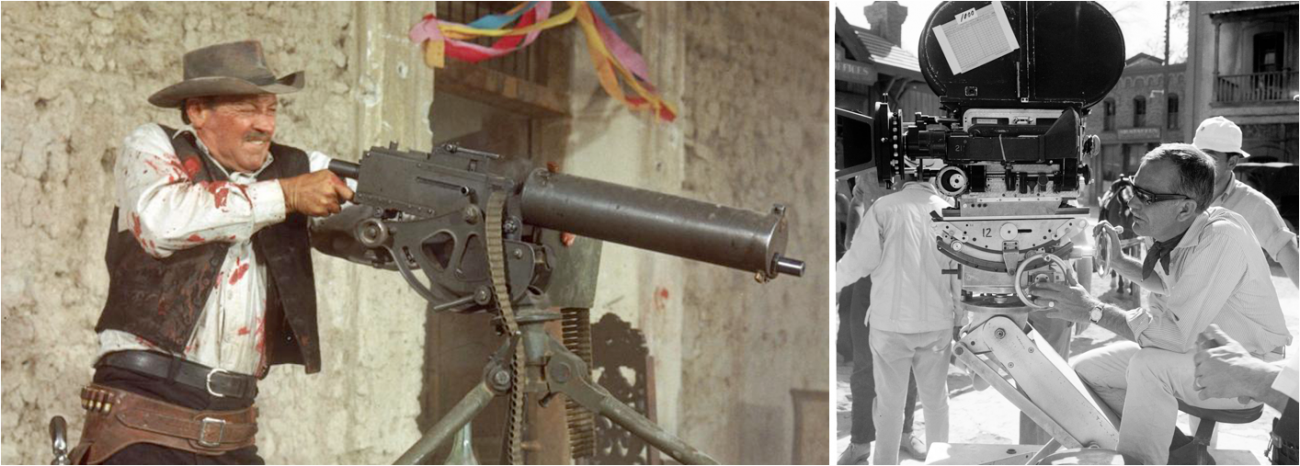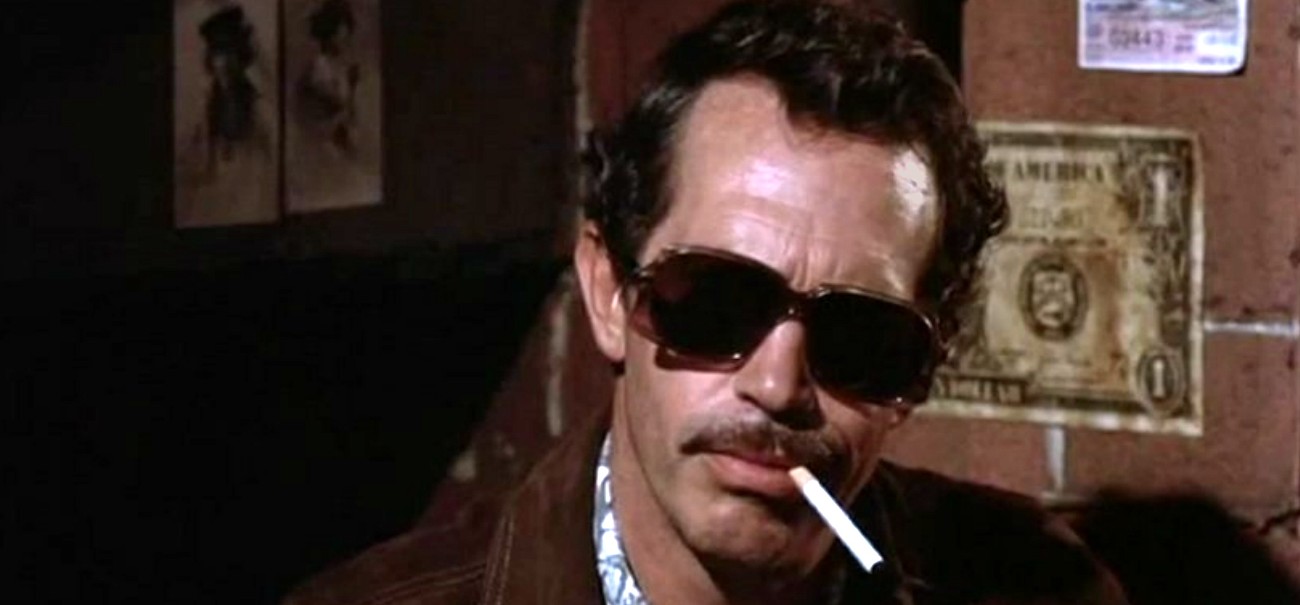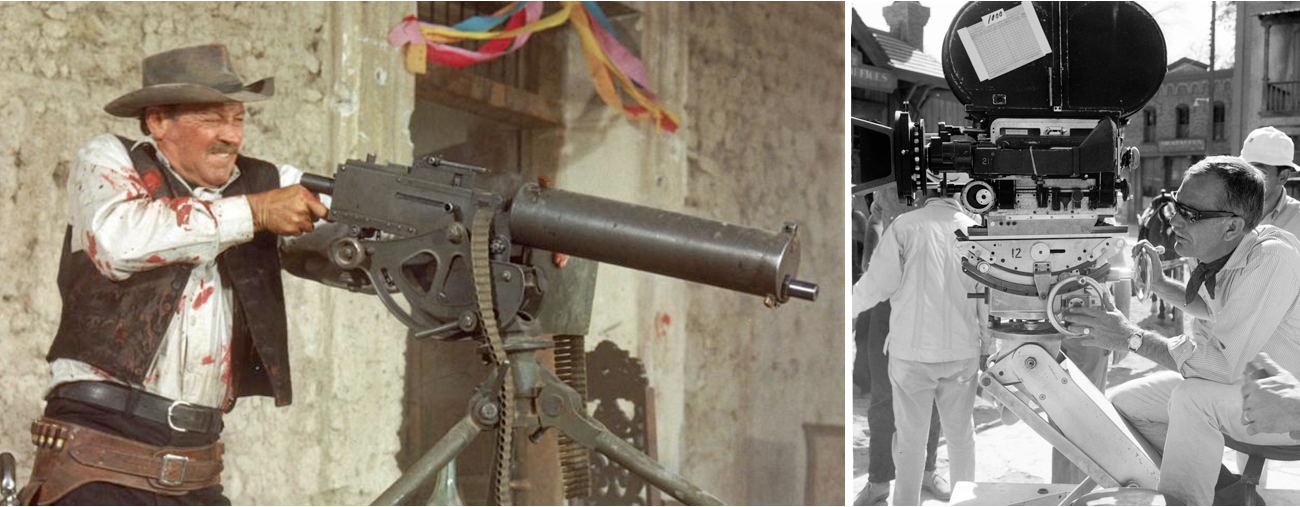Cet article fait partie d’un cycle
The 1st of october, Fernando Ganzo introduced, in the Tati screening room, Sam Peckinpah’s Pat Garrett & Billy the Kid and Cross of Iron. Film critic for So Film and the Spanish review Lumière, he edited Sam Peckinpah, a collective book about the work of the American director (Capricci, 2015). Here is the introduction to that book.
« Don’t ever ruin your career as a loser with a shitty success.” Jorge Oteiza
There is only one thing that can be said about a person as erratic, contradictory, mythomaniac, complex and profound as Sam Peckinpah: here is a director who was made in the image of his characters, those men who belong to a different era, born too late, in a world that opposed all freedom and eccentricity. We like to describe Peckinpah as one of the fathers of New Hollywood, of the baroque aesthetic of the 1970s, as someone who had a primordial and often regrettable influence on that particular style. This is not completely false. However, this tendency to make him into “the man who killed John Ford”, someone who ushered in the end of the Western, does not do justice to his true nature: Sam Peckinpah is more like “the man who wanted to be John Ford”, but in a Hollywood and in an America that had already changed too much. We must think of the commercial success of Sergio Leone’s Westerns, made at the same time, which succeeded because of his few, well-chosen fight scenes, his cartoon-like characters, and his lengthy long shots. Luckily for him, Peckinpah had something else to say, or rather something to say differently. Good to know: death is film’s ultimate subject. He was the first director to do in Hollywood what Nagisa Oshima did in Japan: look death in the face, because death is the only moment that truly deserves this, as a moment of transcendence, of despair, that puts man in contact with the absolute. Peckinpah accomplished this, starting with his second film, Ride the High Country, when the character played by Joel McCrea asks to be left alone with the mountain just before he dies. Similarly, in Pat Garrett & Billy the Kid, Katy Jurado keeps a prudent distance, her face covered with tears, when her husband (Slim Pickens) dies while watching the sunset, a smile on his face, to the sound of “Knockin’ on Heaven’s Door”.
For Peckinpah, death always arrives via violence. Violence is a fetish, certainly, but also is the ultimate instrument that determines the history of the United States by populating it with ghosts. Scarred by his time in the army, Peckinpah wanted to show that man does not die easily and that death is not only a rupture, its very spectacle is as well. For him, the cinema was truly death at work. This is the origin of his aggression toward the image and toward the spectator. It is no coincidence that Peckinpah was obsessed by Resnais’ Last Year at Marienbad, which he couldn’t help going back to time and again, without even knowing if he loved it or hated it. He had discovered that the narrative structure is also a question of perception and of sensorial stimulation: zooms, suffocating slow motion, extremely short shots, and desynchronizations of all kinds. For Peckinpah, all of these gimmicks are the perfect expression of his world, a world of revenants. Take, for example, Pat Garrett & Billy the Kid where Garrett, who has just accepted a job as sheriff, finds himself faced with the task of killing his old friend the Kid. The famous first scene of the film shows Garrett, in sepia, being murdered at the dawn of the 20th century. Simultaneously, a parallel montage takes us thirty years earlier, during a scene where Kid and his friends – including Garrett himself – shoot chickens for fun. The montage alternates between these two scenes of gunfire, provoking a strange feeling: it seems to be Billy the Kid who kills Garrett. It’s even Garrett who seems to shoot himself. This isn’t far from the scene where Tom Doniphon kills Liberty Valance to construct a world where there’s no place left for men like him. Except here it is the montage that does the explaining for us. For Peckinpah, at this precise moment of her history, America killed an essential part of herself, the part that represented her liberty and her dignity. From this moment on, the cowboy would necessarily be an outcast, a living corpse. Peckinpah himself played the role of a gravedigger in Pat Garrett, his last Western. The next year, he filmed Warren Oates driving around a corpse’s head from one end of Mexico to the other, in Bring Me the Head of Alfredo Garcia. Dreaming of one last chance of saving his life, the character ploughs directly toward his own grave: once the head is delivered and the reward received, he admits (a bit like the characters of The Wild Bunch) that he isn’t capable of leaving things as they are, a statement which leads once again to a final violent massacre. Whether through montage or through the script, everything in Peckinpah’s films brings us to a destructive force that man cannot seem to detach himself from.

Shooting the shooting (William Holden in The Wild Bunch / Sam Peckinpah on set).
Obsessed soldiers, disappointed cowboys, rodeo stars, math teachers and bank robbers figure among the characters that populate his work. Peckinpah knew how to put his whole life into his films, without ever speaking directly of himself. As the actress Helen Shaver said during the film shoot for his last film, The Osterman Weekend, “We live our lives between the words ‘action’ and ‘cut’. It’s the only time when we are truly alive.” This is why, despite the many biographical elements present in the literature dedicated to Sam Peckinpah, this book also analyses brief stories from his film shoots. There, we find the same things as in his films: adventures, disputes, and confrontations (which, far from avoiding, Peckinpah seemed to want to provoke). This destructive force applied to his own film-making made each film shoot an adventure and a moment where everything could be improvised: from the lighting, to the lines, to the décor. Everything to maintain a sense of danger.
“We live our lives between the words ‘action’ and ‘cut’. It’s the only time when we are truly alive.”
Yet the genius of Sam Peckinpah also resides in the work of his actors. All the great actors he directed brought him the best acting of their careers. Accordingly, it is difficult to think of a Charlton Heston who is more complex than he was in the skin of the marginal, obsessive Major Dundee; or a Steve McQueen more pure than he was in the role of Junior Bonner; or of a Jason Robards more touching than he was as Cable Hogue, looking at the prostitute that he loved; or a James Coburn more compelling than when Pat Garrett shot his own reflection, unable to stand what he had become. Why? Because Peckinpah was one of them. At the price of an infinite succession of disputes and battles – often lost – with his producers, his collaborators and his friends. Indeed, this points to a paradox that Peckinpah shares with Orson Welles: both director editors were considered authors, despite the fact that they not only never had the right to the final cut of their films, but quite often suffered the modification, mutilation and massacre of their work at the hands of their producers. This also came at the price of his health, destroyed by alcohol, drugs, and work. Sam Peckinpah will remain the director that taught us that defeat is, forever, the most brilliant of all victories.
Translation from French: Patricia Bass.

